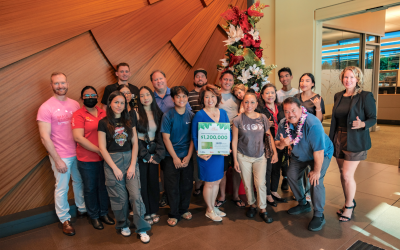In foodservice kitchens, food comes into contact with numerous surfaces throughout the production process, including cutting boards, countertops, knives and other utensils. Things small enough to go through the dishwasher will get sanitized during that process. But we need to ensure that all food contact surfaces are properly sanitized. If not, there will be cross-contamination where pathogens (disease causing organisms) transfer from one food like raw chicken to another, ready-to-eat food like lettuce.
There are three approved sanitizers for use in commercial kitchens, but the two most common are quaternary ammonia (QUAT) and chlorine (bleach). QUAT is usually used for surface sanitization and in the sanitizing sink of a 3-compartment sink. Chlorine is most commonly used as the sanitizer in the final rinse of a chemical sanitizing dishwasher, but when used at the correct level can also be used for surfaces. But what are the correct levels and how do you measure them?
In the case of QUAT, you should read and be familiar with the instructions on the label. Usually the target level is 200 parts per million (ppm) and often the working range is between 150 – 400 ppm. With chlorine, the typical strength is between 50 – 100 ppm. In order to maintain these levels, it is important to have the correct sanitizer test strips available for use; keep in mind that two different test strips are used for QUAT and chlorine.
For the most accurate reading when testing QUAT, hold the strip steady in the sanitizer for ten seconds. Avoid agitating the strip in the sanitizer, make sure the solution has settled enough so you don’t dip the test strip through concentrated bubbles, and the QUAT solution should be room temp, not hot. All of these instances will give a false high reading. To test chlorine, simply dip the test strip into the sanitizer for one second. With both sanitizers immediately compare the color of the test strips to the chart that came with them.
If the Health Inspector finds that your sanitizing buckets/spray bottles, sink, or dishmachine aren’t sanitizing the way they should, it could lead to a dreaded yellow placard!
To learn all the details about how to correctly sanitize surfaces and keep your customers safe, TOBE Co. Food Safety offers ServSafe® Manager Food Safety Training and Certification classes open to the public. For more information or to register for our next class on February 7 call Tom at 235-0797. You can also schedule one of our specialists to have a Food Safety Audit done in your kitchen. E-mail tfrigge@TOBECoFoodSafety.com, or call 235-0797 for more particulars and pricing.

Tom Frigge, Owner
TOBE CO. Food Safety




0 Comments